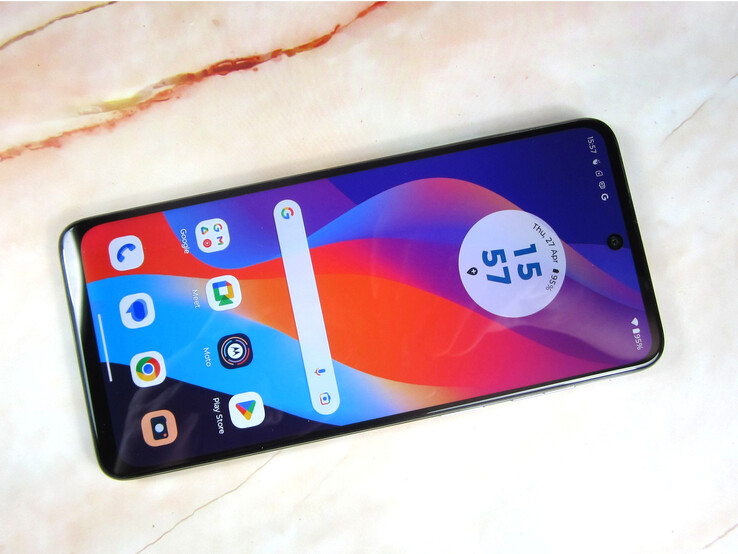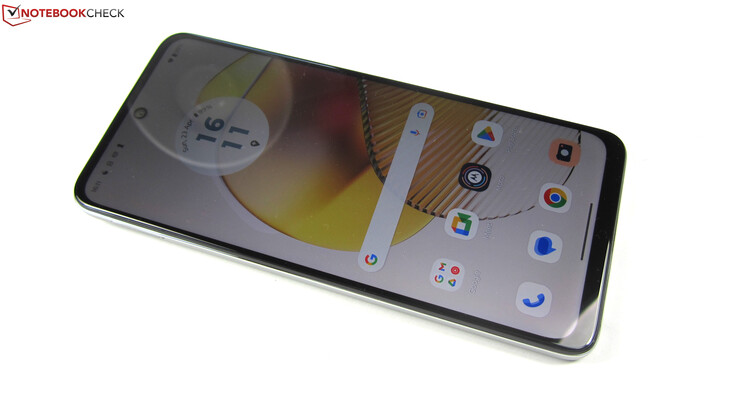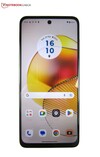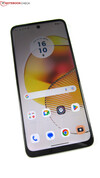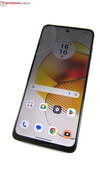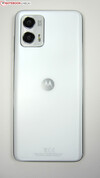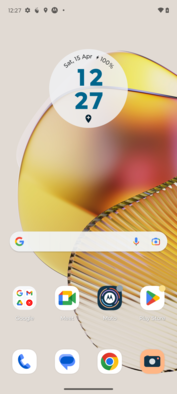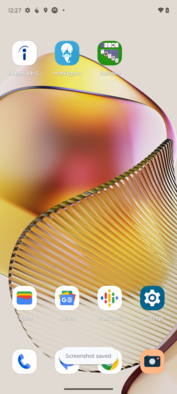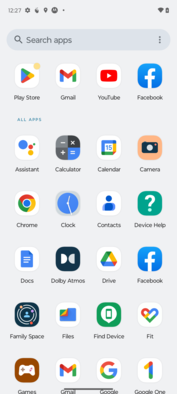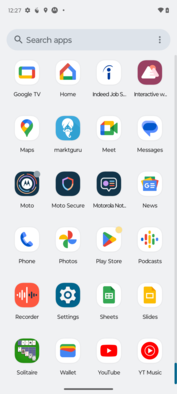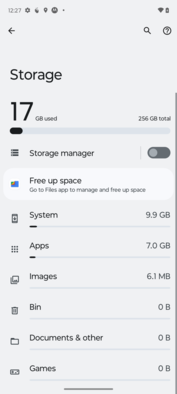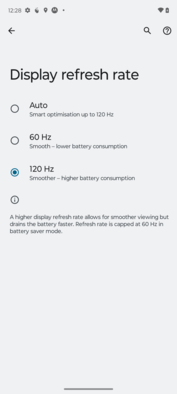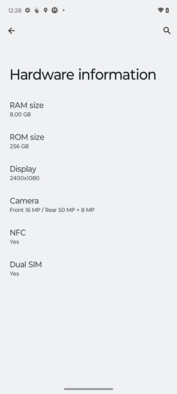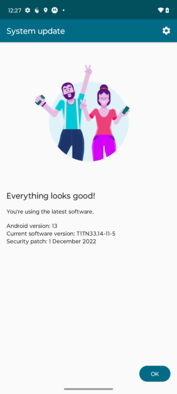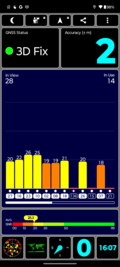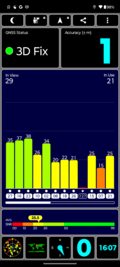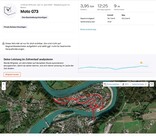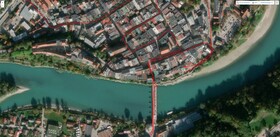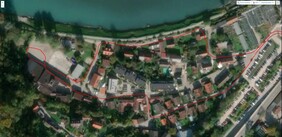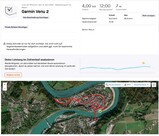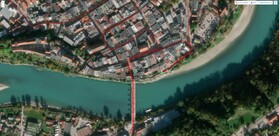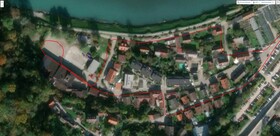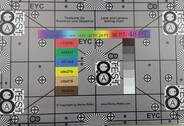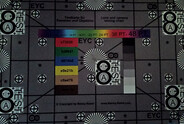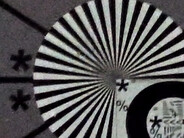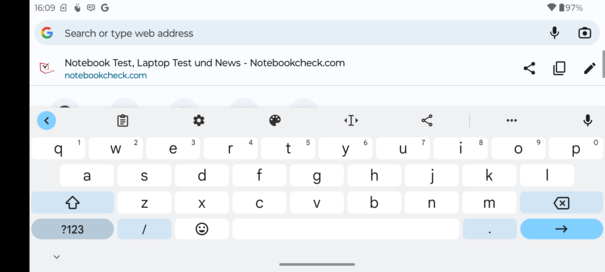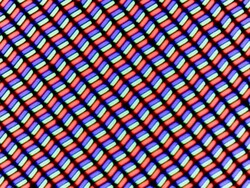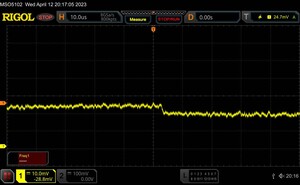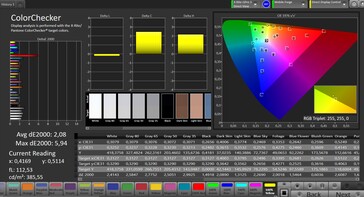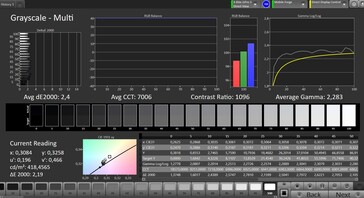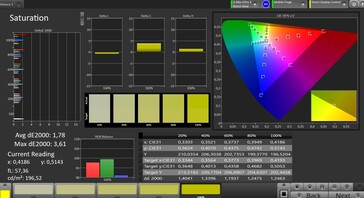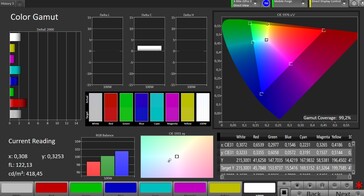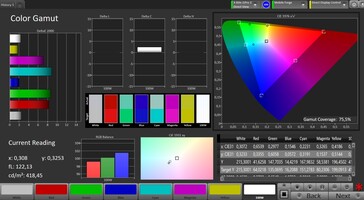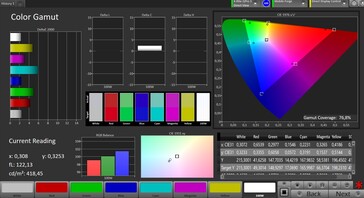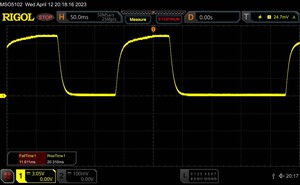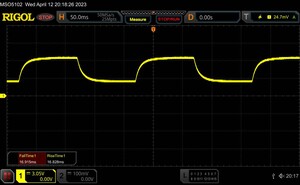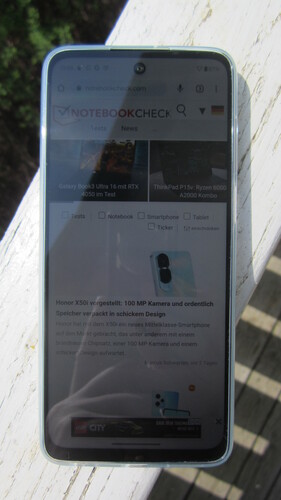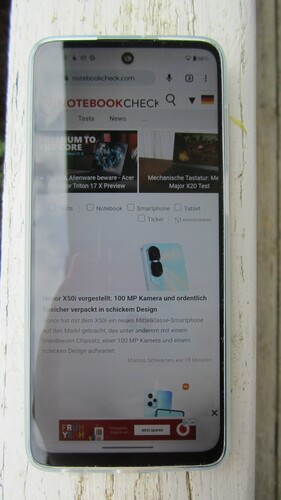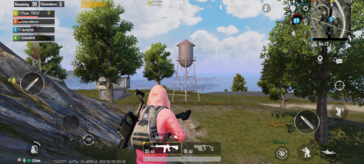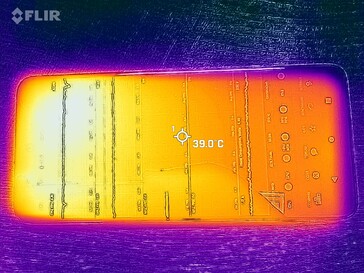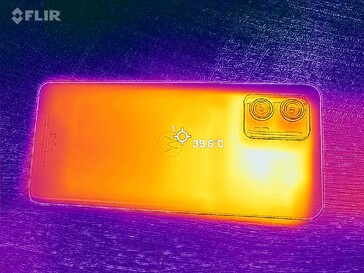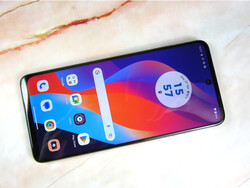Motorola Moto G73 5G review - Brilliant despite its lacklustre display?
Motorola has updated its mid-tier smartphone offerings with the Moto G73 5G and its smaller sibling Moto G53. Whilst prices of the Moto G53 start at around €250 (US$276), the Moto G73 5G costs roughly €300 (US$330). For many users, though, the G73 may be the much more interesting product between the two.
For its slightly higher price tag, the likewise 6.5-inch Moto G73 5G offers a few advantages over the Moto G53. Besides having 5G network support and a faster SoC, it boasts twice the storage (256 GB) as well as a 120Hz IPS panel with a much higher resolution (2,400 x 1,080).
The Moto G73 5G is joining the ranks of many other similarly priced and spec'd smartphones in the highly competitive mid-range segment. In this review, we'll discuss whether Motorola's latest phone has what it takes to stand out from all these competitors.
Comparison with possible competitors
Rating | Date | Model | Weight | Drive | Size | Resolution | Price |
|---|---|---|---|---|---|---|---|
| 82.8 % v7 (old) | 05 / 2023 | Motorola Moto G73 5G Dimensity 930, IMG BXM-8-256 | 181 g | 256 GB UFS 2.2 Flash | 6.50" | 2400x1080 | |
| 85.8 % v7 (old) | 09 / 2022 | Google Pixel 6a Tensor, Mali-G78 MP20 | 178 g | 128 GB UFS 3.1 Flash | 6.10" | 2400x1080 | |
| 81.9 % v7 (old) | 12 / 2022 | Motorola Moto G72 Helio G99, Mali-G57 MP2 | 166 g | 128 GB UFS 2.2 Flash | 6.60" | 2400x1080 | |
| 85.6 % v7 (old) | 07 / 2022 | Nothing Phone (1) SD 778G+ 5G, Adreno 642L | 193.5 g | 256 GB UFS 3.1 Flash | 6.55" | 2400x1080 | |
| 84.9 % v7 (old) | 04 / 2023 | Samsung Galaxy A34 5G Dimensity 1080, Mali-G68 MP4 | 199 g | 128 GB UFS 2.2 Flash | 6.60" | 2340x1080 | |
| 85.4 % v7 (old) | 04 / 2023 | Xiaomi Redmi Note 12 Pro 5G Dimensity 1080, Mali-G68 MP4 | 187 g | 128 GB UFS 2.2 Flash | 6.67" | 2400x1080 |
Case - Plastic chassis, but premium design
The Motorola Moto G73 5G is available in two colours: Midnight Blue (black-blue) and Lucent White (a warmer shade of white). On the latter, both the chassis' frame and the border around the rear camera module are silver. But Motorola has decided not to use any premium materials on the 6.5-inch phone: the chassis is fully made of plastic.
At 181 g (0.4 lb), the Moto G73 5G lacks the lightweight quality of its predecessor (Moto G72), which clocks in at a mere 166 g (0.37 lb) on the scale. But the 8.2 mm-thick phone (0.32") is just as well made and feels great in the hand. The chassis only flexes very minimally when pressed and is water-repellent according to Motorola, but the phone isn't IP-rated.
Other than their slightly different form factor, it is virtually impossible to tell the Moto G73 5G and Moto G72 apart by looking at them from the front. However, Motorola has adopted a new design language for the back of the G73. The previously square camera module has made way for a rectangular one that houses just two (50MP + 8MP) instead of three cameras. For the Moto G73 5G, Motorola has dropped the 2MP macro lens found on the predecessor.
Specifications - 8 GB of RAM and 256 GB of storage
Regardless of which colour you choose, the Moto G73 5G always comes with 8 GB of RAM and 256 GB of UFS 2.2 storage. You can expand the amount of storage by adding a microSD card of up to 1 TB. The G73 5G has a hybrid slot that can hold a second nano SIM card. This means you can insert two nano SIMs if you don't intend to add more storage.
Unlike many mid-range phones, the Motorola G73 5G comes with a 3.5 mm audio jack. However, its USB-C port is fairly standard and only capable of USB 2.0 speed. As well as NFC and Bluetooth 5.3, the phone also supports DRM Widewine L1 and can thus stream content in HD quality.
microSD card reader
The Moto G73 5G managed to deliver good and stable read and write speeds in conjunction with our reference microSD card (Angelbird AV Pro V60). The built-in card reader also performed well in our file copy test. That said, it couldn't quite reach the speed of the Moto G72.
| SD Card Reader - average JPG Copy Test (av. of 3 runs) | |
| Samsung Galaxy A34 5G (Angelbird AV Pro V60) | |
| Motorola Moto G72 (Angelbird V60) | |
| Motorola Moto G73 5G (Angelbird V60) | |
Cross Platform Disk Test (CPDT)
Software - Nearly stock Android 13
The Moto G73 5G runs a mostly stock Android 13 supplemented by Motorola's own Moto app. Amongst other things, the app lets users modify the UI design, configure gesture control and enable the Peek Display feature we've seen on other Motorola phones.
According to the product's support page, Motorola promises to provide the phone with one OS update as well as Android security updates until January 2026. The latter updates are supposed to roll out once every two months. At the time of this review (late April), however, the company was still behind their update schedule: the last security patches were dated 1 December 2022.
Connectivity and GNSS - Good Wi-Fi 5 & accurate GPS
The Moto G73 5G supports all current cellular network standards, including 5G (Sub-6), and offers good frequency coverage for its price point, having compatibility with 16 4G bands and 12 5G bands. Sure, this won't turn the Motorola phone into a globetrotter, but it should be enough to ensure you'll always get a signal in central Europe.
The Moto G73 5G delivered good and stable transfer rates over Wi-Fi when connected to our reference router (Asus ROG Rapture AXE11000). The results are exactly in line with what can be achieved with Wi-Fi 5. That said, many mid-range smartphones on the market right now are substantially faster. For instance, the Google Pixel 6a and the Xiaomi Redmi Note 12 Pro 5G can transfer data more than twice as fast as the G73 over Wi-Fi.
| Networking | |
| iperf3 receive AXE11000 | |
| Google Pixel 6a | |
| Xiaomi Redmi Note 12 Pro 5G | |
| Average of class Smartphone (52 - 1857, n=183, last 2 years) | |
| Samsung Galaxy A34 5G | |
| Motorola Moto G73 5G | |
| Motorola Moto G72 | |
| iperf3 transmit AXE11000 | |
| Xiaomi Redmi Note 12 Pro 5G | |
| Google Pixel 6a | |
| Average of class Smartphone (49.8 - 1828, n=183, last 2 years) | |
| Samsung Galaxy A34 5G | |
| Motorola Moto G73 5G | |
| Motorola Moto G72 | |
| iperf3 transmit AXE11000 6GHz | |
| Average of class Smartphone (508 - 1945, n=91, last 2 years) | |
| Nothing Phone (1) | |
| iperf3 receive AXE11000 6GHz | |
| Average of class Smartphone (451 - 1870, n=91, last 2 years) | |
| Nothing Phone (1) | |
The Motorola G73 5G uses the satellite navigation services GPS (L1), GLONASS (L1) and Galileo (L1). The phone is able to quickly determine its location outdoors down to an accuracy of one metre.
To test out its navigation capabilities in the real world, we took the Moto G73 5G on a roughly 4 km-long bike ride (2.49 mi) and compared the route it recorded with the one provided by a Garmin Venu 2 fitness watch. Although the phone didn't always track our position accurately on the route travelled, the deviations from the actual path are negligibly small overall. The Motorola is therefore very well suited for day-to-day navigation tasks.
Telephony and call quality
The Moto G73 5G sounds great during phone calls. Voices of people on the other end are clear and almost noise-free even in loud environments. Conversations sound somewhat muffled in hands-free mode, but they still remain highly intelligible.
The card slot can hold either two nano SIM cards or one nano SIM and one microSD card. The phone supports VoLTE and Wi-Fi calling.
At 1.01 W/kg (head SAR) and 1.78 W/kg (body SAR), radiation levels from the device are slightly higher than from the Moto G72 (0.95 and 1.69 W/kg respectively). For those looking a mobile phone with particularly low radiation, the Xiaomi Redmi Note 12 (0.367 W/kg and 0.789 W/kg) is the best bet amongst the devices in our comparison.
Cameras - Dual-camera setup
The Moto G73 5G has a 16MP front camera that produces fairly sharp images and can automatically blur out the background in portrait mode. On the back, there is a dual-camera setup comprising a 50MP main shooter and an 8MP 118° ultrawide camera.
By default, the main camera combines four adjacent pixels into one pixel and thus produces 12MP images. Ultra-Res mode lets you make use of the full 50MP resolution.
As expected, the main camera can't keep up with high-end camera gear, but it does what it needs to do pretty well. In daylight, the camera takes sharp photos with good contrast and a decent level of detail. Even in low-light conditions, the main shooter is still able get a lot out of a scene especially in Night Vision mode – another impressive feat for a camera on a phone in this price range.
The 8MP ultrawide camera likewise produces good-looking photos in daylight. However, you'll quickly notice that images are lacking in detail when zooming in on them. The Moto G73 automatically switches between the two lenses using hybrid zoom.
The selfie camera can capture videos at up to 1080p and 30 fps. Just like the main shooter, which can do 1080p at 60 fps, the front camera uses electronic image stabilisation. The Dual Capture function allows you to record videos simultaneously using the selfie camera and either the main or ultrawide camera. Though you can't switch between them whilst recording in this mode.
Image comparison
Choose a scene and navigate within the first image. One click changes the position on touchscreens. One click on the zoomed-in image opens the original in a new window. The first image shows the scaled photograph of the test device.
Daylight photo 1Daylight photo 2Ultrawide shotLow-light photoIn our test lab, the main shooter demonstrated that it can reproduce colours accurately in optimal lighting conditions (max Delta E of 8.77). It also deserves a thumbs-up for its low-light performance; despite being very blurry, the photo of the test chart taken at 1 lux is still fully readable.
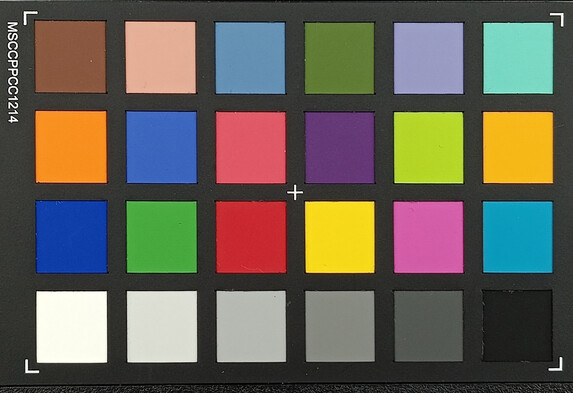
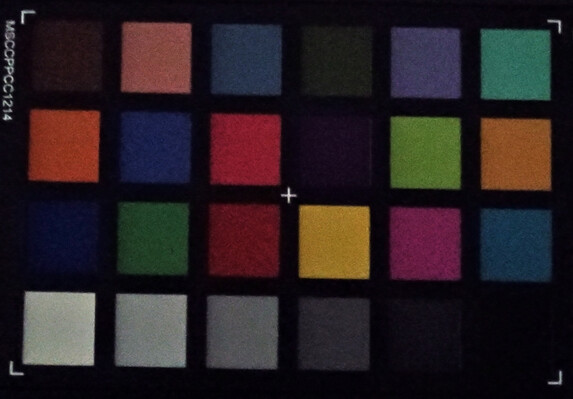
Accessories and warranty - Optional protection plan
The Motorola Moto G73 5G comes packaged with a 30-watt charger (10V/3A), a USB cable (Type-C to C), a SIM ejector tool, a clear protective case, a quick start guide and a separate safety information booklet. In the Motorola shop, you can also purchase accessories such as headsets and Bluetooth speakers.
Motorola provides a 24-month warranty on the Moto G73 5G in Germany. Warranty conditions may differ from region to region. For example, customers in the US will only receive a 12-month standard warranty. The company also gives users the option to extend the warranty period to three years and purchase an additional accident protection plan with Moto Care. At the time of writing, this will cost between €20 and €44 (~US$22 and US$48) depending on the plan selected.
Input devices and handling - Integrated fingerprint sensor in the power button
The LCD panel supports refresh rates of up to 120Hz and makes inputs, animations and scrolling through menus and websites look nice and smooth. The hardware buttons on the right side of the chassis provide crisp feedback when pressed.
Users can unlock the Moto G73 5G biometrically using 2D face recognition or the fingerprint reader built into the power button. Both methods are fast and reliable. However, when using the software-based face recognition, you need to make sure that the ambient light is bright enough. Otherwise you won't be be able to log in.
Display - Significant step backwards compared with the predecessor
The Motorola Moto G73 5G ditches the OLED display on its predecessor in favour of an IPS screen. Even though it retains a 120Hz refresh rate, the panel takes another step backwards in terms of brightness.
Whilst the Moto G72 has an average peak brightness of 980 cd/m² and thus is above average in this department for a mid-tier device, max brightness has nearly been halved on the Moto G73 5G. On a pure white background, the screen only managed to hit an average of about 498 cd/m² across the entire display, putting the G73 5G at the very bottom of our comparison. Restricting the analysis to a smaller section of the screen (APL18) didn't make the result much better either and resulted in a max brightness of 542 cd/m².
Nevertheless, switching to an LCD panel does have one benefit: the Motorola Moto G73 5G doesn't exhibit any PWM flicker, meaning sensitive users can go for the device without worries.
| |||||||||||||||||||||||||
Brightness Distribution: 89 %
Center on Battery: 516 cd/m²
Contrast: 1200:1 (Black: 0.43 cd/m²)
ΔE ColorChecker Calman: 2.08 | ∀{0.5-29.43 Ø4.79}
ΔE Greyscale Calman: 2.4 | ∀{0.09-98 Ø5}
99.2% sRGB (Calman 2D)
Gamma: 2.283
CCT: 7006 K
| Motorola Moto G73 5G IPS LCD, 2400x1080, 6.5" | Google Pixel 6a AMOLED, 2400x1080, 6.1" | Motorola Moto G72 P-OLED, 2400x1080, 6.6" | Nothing Phone (1) OLED, 2400x1080, 6.6" | Samsung Galaxy A34 5G Super AMOLED, 2340x1080, 6.6" | Xiaomi Redmi Note 12 Pro 5G OLED, 2400x1080, 6.7" | |
|---|---|---|---|---|---|---|
| Screen | 42% | 2% | 31% | 30% | 61% | |
| Brightness middle (cd/m²) | 516 | 758 47% | 992 92% | 620 20% | 922 79% | 938 82% |
| Brightness (cd/m²) | 498 | 767 54% | 980 97% | 625 26% | 930 87% | 939 89% |
| Brightness Distribution (%) | 89 | 93 4% | 92 3% | 98 10% | 98 10% | 96 8% |
| Black Level * (cd/m²) | 0.43 | |||||
| Contrast (:1) | 1200 | |||||
| Colorchecker dE 2000 * | 2.08 | 0.9 57% | 4.56 -119% | 1.24 40% | 2.5 -20% | 0.9 57% |
| Colorchecker dE 2000 max. * | 5.94 | 2.5 58% | 7.96 -34% | 2.31 61% | 3.6 39% | 1.6 73% |
| Greyscale dE 2000 * | 2.4 | 1.6 33% | 3.1 -29% | 1.7 29% | 2.7 -13% | 1 58% |
| Gamma | 2.283 96% | 2.2 100% | 2.233 99% | 2.318 95% | 2.09 105% | 2.25 98% |
| CCT | 7006 93% | 6599 98% | 7098 92% | 6325 103% | 6661 98% | 6350 102% |
* ... smaller is better
Screen Flickering / PWM (Pulse-Width Modulation)
| Screen flickering / PWM not detected | |||
In comparison: 53 % of all tested devices do not use PWM to dim the display. If PWM was detected, an average of 8152 (minimum: 5 - maximum: 343500) Hz was measured. | |||
The IPS screen on the Moto G73 5G supports both HDR10 and HLG. The display has the best colour reproduction in Natural mode. The Delta E values for colours and shades of grey are all within the ideal range (i.e. below 3). The LCD panel isn't quite perfect when it comes to RGB balance, but the very minor blue tint (colour temperature 7006K) should be hardly noticeable in everyday use. There is also a slider that lets you adjust the colour temperature to your liking.
Display Response Times
| ↔ Response Time Black to White | ||
|---|---|---|
| 31.9 ms ... rise ↗ and fall ↘ combined | ↗ 11.6 ms rise | |
| ↘ 20.3 ms fall | ||
| The screen shows slow response rates in our tests and will be unsatisfactory for gamers. In comparison, all tested devices range from 0.1 (minimum) to 240 (maximum) ms. » 85 % of all devices are better. This means that the measured response time is worse than the average of all tested devices (20.3 ms). | ||
| ↔ Response Time 50% Grey to 80% Grey | ||
| 33.7 ms ... rise ↗ and fall ↘ combined | ↗ 16.9 ms rise | |
| ↘ 16.8 ms fall | ||
| The screen shows slow response rates in our tests and will be unsatisfactory for gamers. In comparison, all tested devices range from 0.165 (minimum) to 636 (maximum) ms. » 45 % of all devices are better. This means that the measured response time is similar to the average of all tested devices (31.7 ms). | ||
Due to the relatively low brightness of its IPS display, the Moto G73 isn't exactly amazing for outdoor use. Contents on the screen are sometimes very hard to make out in direct sunlight. And readability isn't always perfect even in shady spots. Although the display only exhibits minimal colour shifts when viewed from sharp angles, its brightness rolls off rapidly when you are not looking at the LCD screen head-on at 90°.
Performance - Solid mid-range power
The Motorola Moto G73 5G features the eight-core MediaTek Dimensity 930 SoC, which replaces the MediaTek Helio G99 found in the G72. The Dimensity 930 is manufactured using a 6 nm process and comprises two ARM Cortext A78 performance cores running at 2.2GHz as well as six efficient ARM Cortex A55 cores that can go up to 2GHz.
The MediaTek Dimensity 930 helps the Moto G73 5G deliver great performance in day-to-day use. The smartphone ran through our gauntlet of CPU benchmarks as swiftly as the Samsung Galaxy A34 5G and the Xiaomi Redmi Note 12 Pro 5G, but it lags behind both devices except in PCMark. Whilst the Moto G73 5G is able to outperform the Moto G72, the gap between them isn't massive.
| UL Procyon AI Inference for Android - Overall Score NNAPI | |
| Samsung Galaxy A34 5G | |
| Xiaomi Redmi Note 12 Pro 5G | |
| Google Pixel 6a | |
| Nothing Phone (1) | |
| Average of class Smartphone (3769 - 81594, n=139, last 2 years) | |
| Motorola Moto G72 | |
| Motorola Moto G73 5G | |
| Average MediaTek Dimensity 930 (5039 - 5507, n=2) | |
The MediaTek Dimensity 930 comes with an IMG BXM-8-256 integrated GPU, which is based on the PowerVR B-Series architecture. This GPU is still quite new and exotic and thus not recognised by every single app. For instance, 3DMark Wild Life refused to run on the Moto G73 5G because the graphics card is supposedly incompatible.
The GPU tests painted a similar picture to the synthetic benchmarks: the Motorola Moto G73 5G is slightly faster than the Moto G72 but can't quite keep up with the Samsung Galaxy A34 5G and Xiaomi Redmi Note 12 Pro 5G in terms of performance.
GFXBench (DX / GLBenchmark) 2.7: T-Rex Onscreen | 1920x1080 T-Rex Offscreen
GFXBench 3.0: on screen Manhattan Onscreen OGL | 1920x1080 1080p Manhattan Offscreen
GFXBench 3.1: on screen Manhattan ES 3.1 Onscreen | 1920x1080 Manhattan ES 3.1 Offscreen
GFXBench: on screen Car Chase Onscreen | 1920x1080 Car Chase Offscreen | on screen Aztec Ruins High Tier Onscreen | 2560x1440 Aztec Ruins High Tier Offscreen | on screen Aztec Ruins Normal Tier Onscreen | 1920x1080 Aztec Ruins Normal Tier Offscreen | 3840x2160 4K Aztec Ruins High Tier Offscreen
| 3DMark / Sling Shot Extreme (Vulkan) Unlimited Physics | |
| Samsung Galaxy A34 5G | |
| Motorola Moto G73 5G | |
| Nothing Phone (1) | |
| Motorola Moto G72 | |
| Xiaomi Redmi Note 12 Pro 5G | |
| Google Pixel 6a | |
| 3DMark / Sling Shot Extreme (Vulkan) Unlimited Graphics | |
| Nothing Phone (1) | |
| Samsung Galaxy A34 5G | |
| Xiaomi Redmi Note 12 Pro 5G | |
| Motorola Moto G73 5G | |
| Motorola Moto G72 | |
| Google Pixel 6a | |
| 3DMark / Sling Shot Extreme (Vulkan) Unlimited | |
| Nothing Phone (1) | |
| Samsung Galaxy A34 5G | |
| Xiaomi Redmi Note 12 Pro 5G | |
| Motorola Moto G73 5G | |
| Motorola Moto G72 | |
| Google Pixel 6a | |
| 3DMark / Sling Shot Extreme (ES 3.1) Unlimited Physics | |
| Nothing Phone (1) | |
| Xiaomi Redmi Note 12 Pro 5G | |
| Google Pixel 6a | |
| Samsung Galaxy A34 5G | |
| Motorola Moto G72 | |
| Motorola Moto G73 5G | |
| 3DMark / Sling Shot Extreme (ES 3.1) Unlimited Graphics | |
| Google Pixel 6a | |
| Nothing Phone (1) | |
| Samsung Galaxy A34 5G | |
| Xiaomi Redmi Note 12 Pro 5G | |
| Motorola Moto G72 | |
| Motorola Moto G73 5G | |
| 3DMark / Sling Shot Extreme (ES 3.1) Unlimited | |
| Google Pixel 6a | |
| Nothing Phone (1) | |
| Xiaomi Redmi Note 12 Pro 5G | |
| Samsung Galaxy A34 5G | |
| Motorola Moto G72 | |
| Motorola Moto G73 5G | |
| GFXBench (DX / GLBenchmark) 2.7 / T-Rex Onscreen | |
| Nothing Phone (1) | |
| Samsung Galaxy A34 5G | |
| Motorola Moto G73 5G | |
| Xiaomi Redmi Note 12 Pro 5G | |
| Google Pixel 6a | |
| Motorola Moto G72 | |
| GFXBench (DX / GLBenchmark) 2.7 / T-Rex Offscreen | |
| Google Pixel 6a | |
| Nothing Phone (1) | |
| Xiaomi Redmi Note 12 Pro 5G | |
| Samsung Galaxy A34 5G | |
| Motorola Moto G73 5G | |
| Motorola Moto G72 | |
| GFXBench 3.0 / Manhattan Onscreen OGL | |
| Nothing Phone (1) | |
| Google Pixel 6a | |
| Xiaomi Redmi Note 12 Pro 5G | |
| Motorola Moto G73 5G | |
| Samsung Galaxy A34 5G | |
| Motorola Moto G72 | |
| GFXBench 3.0 / 1080p Manhattan Offscreen | |
| Google Pixel 6a | |
| Nothing Phone (1) | |
| Xiaomi Redmi Note 12 Pro 5G | |
| Samsung Galaxy A34 5G | |
| Motorola Moto G73 5G | |
| Motorola Moto G72 | |
| GFXBench 3.1 / Manhattan ES 3.1 Onscreen | |
| Google Pixel 6a | |
| Nothing Phone (1) | |
| Xiaomi Redmi Note 12 Pro 5G | |
| Samsung Galaxy A34 5G | |
| Motorola Moto G73 5G | |
| Motorola Moto G72 | |
| GFXBench 3.1 / Manhattan ES 3.1 Offscreen | |
| Google Pixel 6a | |
| Nothing Phone (1) | |
| Xiaomi Redmi Note 12 Pro 5G | |
| Samsung Galaxy A34 5G | |
| Motorola Moto G72 | |
| Motorola Moto G73 5G | |
| GFXBench / Car Chase Onscreen | |
| Google Pixel 6a | |
| Nothing Phone (1) | |
| Samsung Galaxy A34 5G | |
| Xiaomi Redmi Note 12 Pro 5G | |
| Motorola Moto G73 5G | |
| Motorola Moto G72 | |
| GFXBench / Car Chase Offscreen | |
| Google Pixel 6a | |
| Nothing Phone (1) | |
| Xiaomi Redmi Note 12 Pro 5G | |
| Samsung Galaxy A34 5G | |
| Motorola Moto G73 5G | |
| Motorola Moto G72 | |
| GFXBench / Aztec Ruins High Tier Onscreen | |
| Google Pixel 6a | |
| Nothing Phone (1) | |
| Samsung Galaxy A34 5G | |
| Xiaomi Redmi Note 12 Pro 5G | |
| Motorola Moto G73 5G | |
| Motorola Moto G72 | |
| GFXBench / Aztec Ruins High Tier Offscreen | |
| Google Pixel 6a | |
| Nothing Phone (1) | |
| Xiaomi Redmi Note 12 Pro 5G | |
| Samsung Galaxy A34 5G | |
| Motorola Moto G73 5G | |
| Motorola Moto G72 | |
| GFXBench / Aztec Ruins Normal Tier Onscreen | |
| Google Pixel 6a | |
| Nothing Phone (1) | |
| Xiaomi Redmi Note 12 Pro 5G | |
| Samsung Galaxy A34 5G | |
| Motorola Moto G73 5G | |
| Motorola Moto G72 | |
| GFXBench / Aztec Ruins Normal Tier Offscreen | |
| Google Pixel 6a | |
| Nothing Phone (1) | |
| Xiaomi Redmi Note 12 Pro 5G | |
| Samsung Galaxy A34 5G | |
| Motorola Moto G73 5G | |
| Motorola Moto G72 | |
| GFXBench / 4K Aztec Ruins High Tier Offscreen | |
| Google Pixel 6a | |
| Nothing Phone (1) | |
| Xiaomi Redmi Note 12 Pro 5G | |
| Samsung Galaxy A34 5G | |
| Motorola Moto G73 5G | |
| Motorola Moto G72 | |
The Moto G73 5G is able to load and render websites quickly. During the browser benchmarks, the Motorola phone even managed to achieve above-average rankings in our comparison group, which in all likelihood is mostly due to the device having a newer browser version.
| Jetstream 2 - 2.0 Total Score | |
| Average of class Smartphone (23.8 - 387, n=156, last 2 years) | |
| Motorola Moto G73 5G (Chrome 111.0.5563.116) | |
| Google Pixel 6a (Firefox 1ß4-2-ß) | |
| Nothing Phone (1) (Chrome 103) | |
| Xiaomi Redmi Note 12 Pro 5G (Chrome 111) | |
| Average MediaTek Dimensity 930 (64.7 - 77.1, n=2) | |
| Samsung Galaxy A34 5G (Chrome 111.0.5563.116) | |
| Motorola Moto G72 (Chrome 107) | |
| Speedometer 2.0 - Result 2.0 | |
| Average of class Smartphone (15.2 - 643, n=132, last 2 years) | |
| Google Pixel 6a (Chrome 105.0.5195.79) | |
| Xiaomi Redmi Note 12 Pro 5G (Chrome 111) | |
| Samsung Galaxy A34 5G (Chrome 111.0.5563.116) | |
| Motorola Moto G73 5G (Chrome 111.0.5563.116) | |
| Nothing Phone (1) (Chome 103) | |
| Average MediaTek Dimensity 930 (44.1 - 58.4, n=2) | |
| Motorola Moto G72 (Chome 107) | |
| WebXPRT 4 - Overall | |
| Average of class Smartphone (27 - 306, n=149, last 2 years) | |
| Motorola Moto G73 5G (Chrome 111.0.5563.116) | |
| Average MediaTek Dimensity 930 (69 - 86, n=2) | |
| Samsung Galaxy A34 5G (Chrome 111.0.5563.116) | |
| Google Pixel 6a (Chrome 105.0.5195.79) | |
| Xiaomi Redmi Note 12 Pro 5G (Chrome 111) | |
| Nothing Phone (1) (Chrome 103) | |
| Motorola Moto G72 (Chrome 107) | |
| WebXPRT 3 - Overall | |
| Average of class Smartphone (38 - 380, n=41, last 2 years) | |
| Samsung Galaxy A34 5G (Chrome 111.0.5563.116) | |
| Motorola Moto G73 5G (Chrome 111.0.5563.116) | |
| Nothing Phone (1) (Chrome 103) | |
| Xiaomi Redmi Note 12 Pro 5G (Chrome 111) | |
| Average MediaTek Dimensity 930 (93 - 110, n=2) | |
| Motorola Moto G72 (Chrome 107) | |
| Google Pixel 6a (Chrome 105.0.5195.79) | |
| Octane V2 - Total Score | |
| Average of class Smartphone (2228 - 121337, n=202, last 2 years) | |
| Google Pixel 6a (Chrome 105.0.5195.79) | |
| Xiaomi Redmi Note 12 Pro 5G (Chrome 111) | |
| Motorola Moto G73 5G (Chrome 111.0.5563.116) | |
| Samsung Galaxy A34 5G (Chrome 111.0.5563.116) | |
| Nothing Phone (1) (Chrome 103) | |
| Average MediaTek Dimensity 930 (20342 - 26766, n=2) | |
| Motorola Moto G72 (Chrome 107) | |
| Mozilla Kraken 1.1 - Total | |
| Motorola Moto G72 (Chrome 107) | |
| Samsung Galaxy A34 5G (Chrome 111.0.5563.116) | |
| Nothing Phone (1) (Chrome 103) | |
| Xiaomi Redmi Note 12 Pro 5G (Chrome 111) | |
| Average MediaTek Dimensity 930 (1466 - 1986, n=2) | |
| Google Pixel 6a (Chrome 105.0.5195.79) | |
| Motorola Moto G73 5G (Chrome 111.0.5563.116) | |
| Average of class Smartphone (257 - 28190, n=157, last 2 years) | |
* ... smaller is better
The Moto G73 5G exhibited good read and write performance typical of its class. In sequential read operations, it is able to much better utilise its UFS 2.2 storage than the Moto G72, which has the same storage components.
| Motorola Moto G73 5G | Google Pixel 6a | Motorola Moto G72 | Nothing Phone (1) | Samsung Galaxy A34 5G | Xiaomi Redmi Note 12 Pro 5G | Average 256 GB UFS 2.2 Flash | Average of class Smartphone | |
|---|---|---|---|---|---|---|---|---|
| AndroBench 3-5 | 5% | -11% | 36% | -15% | 6% | -1% | 84% | |
| Sequential Read 256KB (MB/s) | 963.54 | 1312.64 36% | 868.5 -10% | 1638 70% | 887.41 -8% | 1008.8 5% | 908 ? -6% | 2211 ? 129% |
| Sequential Write 256KB (MB/s) | 808.95 | 712.94 -12% | 497.5 -39% | 1351.9 67% | 494.67 -39% | 865.59 7% | 728 ? -10% | 1827 ? 126% |
| Random Read 4KB (MB/s) | 231.38 | 219.53 -5% | 231.4 0% | 240.6 4% | 216.75 -6% | 241.83 5% | 229 ? -1% | 294 ? 27% |
| Random Write 4KB (MB/s) | 220.46 | 225.61 2% | 230.2 4% | 228.2 4% | 206.14 -6% | 234.21 6% | 249 ? 13% | 337 ? 53% |
Gaming - 120 fps is doable but remains an exception
Games run smoothly on this mid-range Motorola phone. Though it is not always good enough for max graphics settings, the tactical shooter PUBG Mobile can hit a stable 30 fps at HD/High setting – the highest option selectable on the phone.
You can also expect to get much higher frame rates in less graphically demanding games. Armajet can be played at 60 fps, whilst Subway Surfers runs at 90 fps on average.
The in-game frame rates were measured using GameBench.
Emissions - High temps, but no throttling
Temperature
In use, the Moto G73 doesn't have any issues with high surface temperatures. The device can get as warm as 45°C (113°F) under load. Whilst this temperature level isn't critical, the surfaces could certainly become a few degrees warmer on hot summer days and make the phone not exactly comfortable to hold in the hand.
We didn't notice any heat build-up inside the Moto G73 5G. During our testing, the phone was constantly able to fully exploit the SoC's performance over an extended period under load. Because the phone isn't compatible with 3DMark Wild Life, we used GFXBench's battery test as a replacement in our stress test.
(±) The maximum temperature on the upper side is 43.9 °C / 111 F, compared to the average of 35.2 °C / 95 F, ranging from 21.9 to 247 °C for the class Smartphone.
(-) The bottom heats up to a maximum of 45.1 °C / 113 F, compared to the average of 34 °C / 93 F
(+) In idle usage, the average temperature for the upper side is 24.6 °C / 76 F, compared to the device average of 32.9 °C / 91 F.
Speakers
Though lacking in bass, the Dolby Atmos-compatible stereo speakers on the Moto G73 5G produce a fairly balanced sound as far as smartphones go. And they don't distort even when the volume is turned all the way up.
You can connect external audio devices to the phone via the 3.5 mm audio jack or Bluetooth 5.3. Besides AAC, SBC, LC3 and LDAC, the Moto G73 5G also supports all current aptX codecs as well as LDHC v1 to v4.
Motorola Moto G73 5G audio analysis
(±) | speaker loudness is average but good (80.9 dB)
Bass 100 - 315 Hz
(-) | nearly no bass - on average 29.6% lower than median
(±) | linearity of bass is average (8.6% delta to prev. frequency)
Mids 400 - 2000 Hz
(+) | balanced mids - only 3.7% away from median
(+) | mids are linear (5.6% delta to prev. frequency)
Highs 2 - 16 kHz
(+) | balanced highs - only 1.2% away from median
(+) | highs are linear (4% delta to prev. frequency)
Overall 100 - 16.000 Hz
(±) | linearity of overall sound is average (19% difference to median)
Compared to same class
» 23% of all tested devices in this class were better, 9% similar, 68% worse
» The best had a delta of 11%, average was 35%, worst was 134%
Compared to all devices tested
» 44% of all tested devices were better, 8% similar, 49% worse
» The best had a delta of 4%, average was 24%, worst was 134%
Motorola Moto G72 audio analysis
(+) | speakers can play relatively loud (85.4 dB)
Bass 100 - 315 Hz
(-) | nearly no bass - on average 28.3% lower than median
(±) | linearity of bass is average (12.5% delta to prev. frequency)
Mids 400 - 2000 Hz
(±) | higher mids - on average 5.6% higher than median
(+) | mids are linear (4.7% delta to prev. frequency)
Highs 2 - 16 kHz
(+) | balanced highs - only 4.2% away from median
(+) | highs are linear (6% delta to prev. frequency)
Overall 100 - 16.000 Hz
(±) | linearity of overall sound is average (21.2% difference to median)
Compared to same class
» 39% of all tested devices in this class were better, 8% similar, 53% worse
» The best had a delta of 11%, average was 35%, worst was 134%
Compared to all devices tested
» 58% of all tested devices were better, 7% similar, 35% worse
» The best had a delta of 4%, average was 24%, worst was 134%
Battery life - Power-efficient and long-lasting
Power consumption
The Moto G73 5G is pretty power-efficient at idle but can push the battery harder under load. That said, its power consumption is moderate overall and falls within the average range for this class of phone.
The 5,000 mAh battery can be charged using the included 30-watt adapter (maximum 10V/3A). During our testing, it took 1h 19m to bring the battery from 0 to 100%. The battery was 50% full after 29 minutes, 75% full after 46 minutes, and 80% full after 50 minutes.
| Off / Standby | |
| Idle | |
| Load |
|
Key:
min: | |
| Motorola Moto G73 5G 5000 mAh | Google Pixel 6a 4410 mAh | Motorola Moto G72 5000 mAh | Nothing Phone (1) 4500 mAh | Samsung Galaxy A34 5G 5000 mAh | Xiaomi Redmi Note 12 Pro 5G 5000 mAh | Average MediaTek Dimensity 930 | Average of class Smartphone | |
|---|---|---|---|---|---|---|---|---|
| Power Consumption | -3% | 13% | 2% | 5% | -14% | -1% | -19% | |
| Idle Minimum * (Watt) | 0.7 | 0.68 3% | 0.7 -0% | 1 -43% | 0.69 1% | 0.99 -41% | 0.9 ? -29% | 0.853 ? -22% |
| Idle Average * (Watt) | 1.2 | 1.56 -30% | 1.1 8% | 1.2 -0% | 1.61 -34% | 2.03 -69% | 1.35 ? -13% | 1.43 ? -19% |
| Idle Maximum * (Watt) | 1.8 | 1.58 12% | 1.5 17% | 1.5 17% | 1.66 8% | 2.08 -16% | 1.85 ? -3% | 1.609 ? 11% |
| Load Average * (Watt) | 4.8 | 5.37 -12% | 4.5 6% | 4.2 12% | 4.01 16% | 3.97 17% | 4 ? 17% | 7.09 ? -48% |
| Load Maximum * (Watt) | 9.7 | 8.74 10% | 6.5 33% | 7.4 24% | 6.5 33% | 5.85 40% | 7.45 ? 23% | 11.2 ? -15% |
* ... smaller is better
Power consumption: Geekbench (150 cd/m²)
Power consumption: GFXBench (150 cd/m²)
Battery life
The long battery life is one of the biggest strengths of the Moto G73 5G. With screen brightness set to 150 cd/m², the phone roughly lasted a very impressive 17.5 hours during our simulated web-surfing test and almost 20 hours when playing back a H.264 video in a loop.
Amongst the devices in our comparison, only the Samsung Galaxy A34 5G managed to surpass the Moto G73 5G in these tests. Despite also having a 5,000 mAh, the Moto G72 doesn't quite come close to reaching the battery life of its successor.
| Motorola Moto G73 5G 5000 mAh | Google Pixel 6a 4410 mAh | Motorola Moto G72 5000 mAh | Nothing Phone (1) 4500 mAh | Samsung Galaxy A34 5G 5000 mAh | Xiaomi Redmi Note 12 Pro 5G 5000 mAh | |
|---|---|---|---|---|---|---|
| Battery runtime | -9% | -8% | -20% | 9% | -17% | |
| Reader / Idle (h) | 57.6 | 31.3 -46% | 39.9 -31% | 30.2 -48% | 49.6 -14% | 26.6 -54% |
| H.264 (h) | 20 | 22 10% | 18.4 -8% | 17.7 -11% | 22.7 14% | 17.4 -13% |
| WiFi v1.3 (h) | 17.4 | 12.8 -26% | 15.5 -11% | 15.4 -11% | 17.1 -2% | 16.3 -6% |
| Load (h) | 4.8 | 6 25% | 5.6 17% | 4.3 -10% | 6.6 38% | 5 4% |
Pros
Cons
Verdict on the Motorola Moto G73 5G
The Motorola Moto G73 is a solid mid-tier smartphone that offers great bang for your buck. If you intend to use your phone predominantly for web browsing, video playback and occasional gaming, you'll get a lot out of your money with this 6.5-inch device.
The Moto G73 5G provides lots of utility in everyday situations thanks to its long battery life, lean Android 13 and 50MP dual-camera setup that takes good pictures in daylight. Furthermore, it features solid frequency coverage, an accurate GPS, DRM Widewine L1 for streaming HD content and a responsive 120Hz display with HDR10 support.
With the Moto G73 5G, Motorola has put together a great overall package for price-conscious consumers. The less-than-bright IPS display is, however, is a clear drawback.
Having said that, the Moto G73 5G's display could be a dealbreaker for many potential buyers. Motorola has chosen to use a rather dull IPS panel in place of the bright OLED display found on the Moto G72. Unlike its predecessor, the G73 5G also lacks an IP rating. And it is still not possible to record 4K videos.
Apart from the Moto G72, alternatives to the Moto G73 5G include phones such as the Samsung Galaxy A34 5G and the Xiaomi Redmi Note 12 Pro 5G. Both devices are in the same price range as the Motorola and are capable of a 120Hz refresh rate, but they are each equipped with a considerably brighter OLED display.
Price and availability
The Motorola G73 5G will set you back around €300 (US$330) if you purchase it directly from Motorola. It is also available from other online retailers (e.g. Amazon DE and Amazon UK) for roughly the same price. Unfortunately, the phone is not yet available in the US.
Motorola Moto G73 5G
- 05/03/2023 v7 (old)
Manuel Masiero
Transparency
The selection of devices to be reviewed is made by our editorial team. The test sample was provided to the author as a loan by the manufacturer or retailer for the purpose of this review. The lender had no influence on this review, nor did the manufacturer receive a copy of this review before publication. There was no obligation to publish this review. As an independent media company, Notebookcheck is not subjected to the authority of manufacturers, retailers or publishers.
This is how Notebookcheck is testing
Every year, Notebookcheck independently reviews hundreds of laptops and smartphones using standardized procedures to ensure that all results are comparable. We have continuously developed our test methods for around 20 years and set industry standards in the process. In our test labs, high-quality measuring equipment is utilized by experienced technicians and editors. These tests involve a multi-stage validation process. Our complex rating system is based on hundreds of well-founded measurements and benchmarks, which maintains objectivity. Further information on our test methods can be found here.




